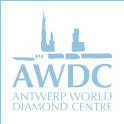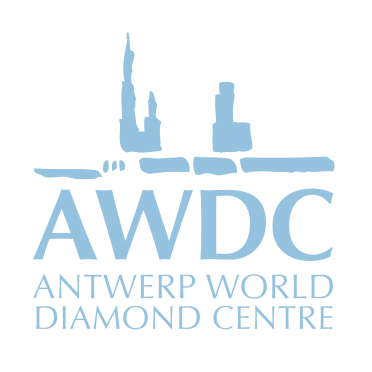- Home
- What can we do for you
- Starting a Business in Antwerp
- 1. Formalities, Registrations and Declarations for Diamond Traders
- Setting up a diamond processing business
- G7/EU Sanctions
- Registered Diamond Companies
- Banking and Taxes
- Antwerp Diamond Tender Facility
- Diamond Office
- Resources and Regulations
- Sponsorship Request
- Brilliant Benefits
- AD Jobs
- Doing Business in Antwerp: Contact List
- Starting a Business in Antwerp
- 1. Formalities, Registrations and Declarations for Diamond Traders
- 2. Founding a Company in Belgium
- 3. Types of Companies in Belgium
- 4. Methods to Acquire Companies in Belgium
- 5. Commercial Property
- 6. Insurance
- 7. Labour in Belgium
- 8. International Agreements
- 9. Subsidies in Belgium
- 10. Intellectual Property
Setting up a diamond processing business
Special regulations are applicable for those who want to process diamonds (cutting, grinding, polishing, etc.). Below, a short review is provided.
Recognised diamond workshop
You are allowed to process diamonds if you have a recognised diamond workshop. In order to become a recognised diamond workshop, the following permits need to be obtained:
- A building permit, to be requested by the owner of the building at the municipality (if the building is rented, please contact the owner);
- A permit for polluting business (vergunning hinderlijk bedrijf), to be requested by the owner of the workshop at the Province of Antwerp at www.provant.be;
- As a result of the law of 20th December 1950 and the Royal Decree of 17th April 1970[1] with respect to the admission of diamond workshops, a special admission needs to be granted by the Joint Committee 324 (Paritair Comité 324) by sending a special request in writing to their offices. After submittal of written request, the Service Well-being of Workers at Work shall visit the workshop and shall verify if all safety requirements are complied with. After a positive review of this service, the file will be handed over again to the Joint Committee 324 which will officially request the authorities to recognize the workshop. The workshop shall be approved by a Ministerial Decree that will be granted to the diamond trader by the Joint Committee.
[1] KB 17 april 1970, ‘betreffende de aanneming van de werkplaatsen van de diamantnijverheid’, B.S. 24 april 1970.
What is a diamond workshop?
A diamond workshop (or “a workshop for the actual shaping of diamonds”) is, as defined in the Royal Decree of 17th of April 1970[1] with respect to the admission of diamond workshops, a workshop where exclusively the cleaving, sawing, cutting, polishing and adjusting of diamonds is performed. The activity of re-sanding used disks for diamond processing (disk sanding) is also included into this definition.
[1] KB 17 april 1970 ‘betreffende de aanneming van de werkplaatsen van de diamantnijverheid’, B.S. (Official Belgian Gazette) 24 april 1970.
Minimum requirements for a diamond workshop
The Royal Decree of 17th April 1970 (see footnote 4) with respect to the admission of diamond workshops, sets out all of the minimum requirements a diamond workshop has to fulfil. Please consult the Royal Decree of 17th April 1970 for more information.
General regulations for the protection of employees (Algemeen Reglement voor de Arbeidsbescherming or ARAB)
With respect to the protection of employees, a set of general regulations is set out. It is mandatory for all workshops to comply with these rules. The regulations are wide spread and cover a period of legislation from 1947 up to 1993. An overview can be found on the following government website: http://www.werk.belgie.be/moduleDefault.aspx?id=1964#AutoAncher1.
Permit for polluting businesses - VLAREM
Diamond workshops are in view of pollution divided into three different classes by VLAREM I[1], which is the applicable regulation with respect to environmental permits as agreed by the Flemish Government. The rules set out by VLAREM I are very extensive, so it is advisable to seek assistance from specialised lawyers in order to guarantee compliance.
VLAREM I divides three classes of polluting companies:
Class 3: least polluting, no permit required, but notification is mandatory. Your workshop will be a Class 3 workshop when the power used is 5 kW up to and including 200 kW when the workshop is situated in an industrial area, or 5kW up to and including 100 kW, when the workshop is not situated in an industrial area. The mandatory notification must be sent by registered mail to the local municipality. The notification form class 3 can be found on the website of VLAREM I (see footnote).
Class 2: polluting workshop, permit required. Your workshop will be a Class 2 workshop when the power used is more than 200 kW up to and including 1000 kW, when the workshop is situated in an industrial zone and more than 100 kW up to and including 500 kW, when the workshop is situated somewhere else. The application needs to be submitted to the municipality where the workshop will be situated. Please find the application form class 2 on the website of VLAREM I (see footnote). The application form also mentions which additional documents need to be added to the application. Since these can differ between all types of companies and situations, it is advisable to closely study the small print on the forms. The application will be granted or rejected within a period of 3,5 months.
Class 1: very polluting, permit required: > 200 kW. Your workshop will be a Class 1 workshop when the power used is more than 1000 kW, when the workshop is situated in an industrial zone and more than 500 kW when the workshop is situated somewhere else. The application form class 1 needs to be submitted to the municipality where the workshop will be situated. You can find the application form on the website of VLAREM I (see footnote). The application form also mentions which additional documents need to be added to the application. Since these can differ between all types of companies and situations, it is advisable to closely study the small print on the forms. The application will be granted or rejected with a period of 4,5 months.
Please consult VLAREM I with respect to the additional documents which are required for submission, and which can vary depending on the circumstances.
[1] http://www.lne.be/themas/hinder-en-risicos/geluidshinder/regelgeving/vlarem







